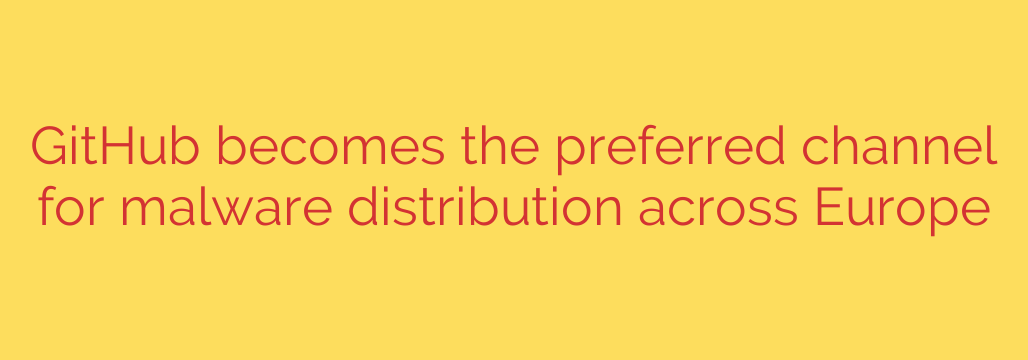
The digital landscape is constantly shifting, and cybercriminals are always seeking new avenues for their malicious activities. A recent trend highlights a significant shift in tactics, with GitHub emerging as a surprisingly preferred channel for distributing malware, particularly impacting users across Europe.
Traditionally seen as a trusted platform for developers to host and share code, GitHub’s reputation and infrastructure are now being exploited by attackers. This makes it harder for conventional cybersecurity tools and filters to differentiate between legitimate projects and those containing harmful content. Because GitHub is a widely used and trusted service, traffic coming from it is often automatically permitted by network defenses, creating a perfect environment for malware distribution.
The appeal for cybercriminals is clear: they can hide malicious code within repositories that often look innocuous or are even mixed with genuine software components. This stealth allows threats like trojans, ransomware, and info-stealers to reach potential victims undetected by initial security checks. Files downloaded from GitHub are frequently assumed to be safe, increasing the likelihood that users will open or execute them without caution.
This trend poses a significant security risk. Organizations and individual users alike need to be aware that downloading code or executables directly from GitHub repositories, even from seemingly legitimate accounts, carries inherent dangers. It’s crucial to exercise extreme vigilance and employ robust security practices.
To mitigate these threats, cybersecurity experts recommend several measures. Users should verify the authenticity and reputation of repository owners before downloading anything. Utilizing advanced endpoint security solutions that perform behavioral analysis rather than just signature matching is also vital. Furthermore, security teams should implement policies that scrutinize downloads from code repositories, perhaps even treating them with the same suspicion as files from unknown sources. Staying informed about the latest threat intelligence regarding new malware campaigns using such platforms is also essential for proactive defense. The rise of GitHub as a malware distribution point underscores the need for continuous adaptation in cybersecurity strategies to counter evolving attack methods.
Source: https://www.helpnetsecurity.com/2025/05/28/attackers-phishing-method-europe/








